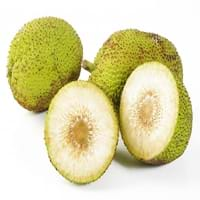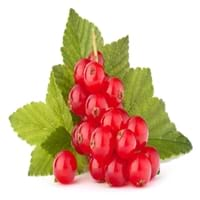Health Benefits
Cancer prevention, Heart care, Maintains healthy cholesterol level, Treatment of skin Diseases
Cancer prevention, Gout treatment, Heart care, Regulation of heart rate, Treatment of rheumatism
General Benefits
Boosts immune system, Digestive aid, Helps in weight loss, Maintains healthy cholesterol level
Anti oxidant properties, Controls blood pressure, Cures fever, Digestive aid, Healing of wounds, Helps in weight loss, Strengthens bones
Skin Benefits
Anti-aging benefits, Skin rejuvenation, Treatment of skin diseases
Brightens and lightens complexion, Reduces wrinkles, Treatment of acne
Hair Benefits
Protects hair, Regulates hair growth, Treatment of dandruff
Protects hair
Allergy Symptoms
Hives, Inflammation of nose, Swelling of mouth, tongue or lips
Abnormally rapid heart rate, Anaphylaxis, Breathing difficulty, Hives, Itching, Swallowing difficulties
Side Effects
Allergic reaction
Possibly unsafe during pregnancy
Best Time to Eat
Along with meal, As a snack in the late afternoon, Don't consume at night and before bed, Don't eat after meal
Best if taken as a breakfast (or empty stomach), As a snack in the late afternoon, Don't eat after meal, Morning time (before lunch)
Vitamin B5 (Pantothenic Acid)
Vitamin C (Ascorbic Acid)
Vitamin K (Phyllochinone)
Calories in Fresh Fruit with Peel
Not Available
Calories in Fresh Fruit without Peel
Not Available
Calories in Frozen Form
Not Available
Not Available
Calories in Dried Form
Not Available
Calories in Canned Form
Not Available
Not Available
Calories in Jam
Not Available
Type
Fruit vegetable, Tropical
Berry
Season
All seasons
Summer
Varieties
Koqo, Tamaikora, Temaipo, Uto Kuro, Samoa, Buco Ni Viti and Kulu Dina
Rovada, Stanza, Red Lake, Junifer and Jonkheer van Tets
Origin
South Pacific
Europe
Soil Type
Loam, Sand, Sandy loam, Well-drained
Moist, Well-drained
Climatic Conditions
Humid, Rainfall, Warm
Cold
Facts about
- The milky sap of breadfruit tree is used as glue & bark is used to make papers.
- Breadfruit tree produces 1st fruit after 2-3 years from planting & remains productive for decades.
- The seeds of breadfruit are edible.
- The albino version of red currants known as white currants, are often sold as different fruit.
- Red currant tea is healthy substitute for coffee.
- There are more than 150 varieties of red currants.
Top Producer
Jamaica
Russia
Other Countries
Africa, India, United States of America
Belgium, France, Germany, Ireland, Italy, Netherlands, Poland, Portugal, Scotland, Spain, Sweden, United Kingdom
Top Importer
United States of America
Germany
Top Exporter
Jamaica
Russia
Botanical Name
Artocarpus altilis
Ribes rubrum
Synonym
Artocarpus communis or Artocarpus incisa
Not Available
Subkingdom
Tracheobionta
Tracheobionta
Division
Magnoliophyta
Magnoliophyta
Class
Magnoliopsida
Magnoliopsida
Subclass
Magnollidae
Rosidae
Order
Rosales
Saxifragales
Family
Moraceae
Grossulariaceae
Species
A. altilis
R. rubrum
Generic Group
Mulberry
Saxifrage
Difference Between Breadfruit and Red Currant
We might think that Breadfruit and Red Currant are similar with respect to nutritional value and health benefits. But the nutrient content of both fruits is different. Breadfruit and Red Currant Facts such as their taste, shape, color, and size are also distinct. The difference between Breadfruit and Red Currant is explained here.
The amount of calories in 100 gm of fresh Breadfruit and Red Currant with peel is Not Available and 56.00 kcal and the amount of calories without peel is 103.00 kcal and Not Available respectively. Thus, Breadfruit and Red Currant belong to High Calorie Fruits and Low Calorie Fruits category.These fruits might or might not differ with respect to their scientific classification. The order of Breadfruit and Red Currant is Rosales and Saxifragales respectively. Breadfruit belongs to Moraceae family and Red Currant belongs to Grossulariaceae family. Breadfruit belongs to Artocarpus genus of A. altilis species and Red Currant belongs to Ribes genus of R. rubrum species. Beings plants, both fruits belong to Plantae Kingdom.









